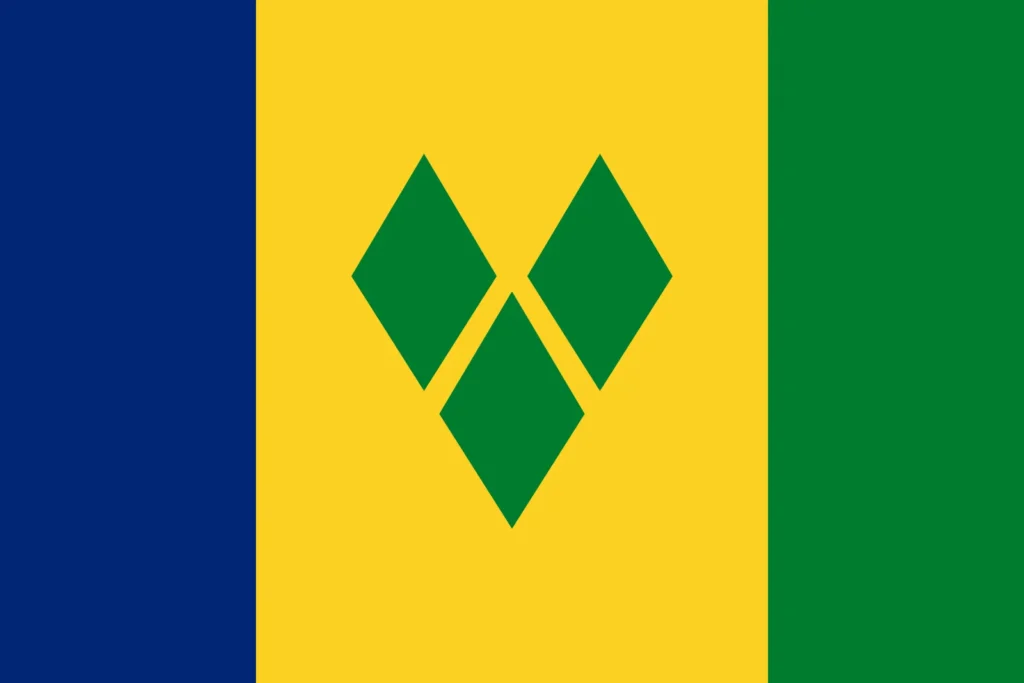
Here’s an overview of St. Vincent and the Grenadines and its capital, Kingstown:
General Information:
- Official Name: Saint Vincent and the Grenadines
- Capital: Kingstown
- Official Language: English (Vincentian Creole is also widely spoken)
- Currency: Eastern Caribbean Dollar (XCD)
- Population: Approximately 110,000 (as of 2023)
- Area: 389 square kilometers (150 square miles)
- Location: Situated in the Lesser Antilles of the Caribbean, it consists of the main island of St. Vincent and a chain of smaller islands, the Grenadines, stretching southward toward Grenada.
Geography:
- Main Island (St. Vincent):
- A volcanic island with lush rainforests, black sand beaches, and a central mountain range dominated by La Soufrière, an active volcano.
- Fertile soil supports agriculture, particularly banana farming.
- The Grenadines:
- A chain of 32 smaller islands and cays, including Bequia, Mustique, Canouan, and Union Island.
- Known for their white sand beaches, coral reefs, and luxury resorts.
- Kingstown:
- Located on the southwestern coast of St. Vincent, it serves as the economic, administrative, and cultural hub.
History:
- Pre-Colonial Era:
- Originally inhabited by the indigenous Arawaks, followed by the Caribs.
- St. Vincent was home to the Black Caribs (Garifuna), descendants of Caribs and escaped African slaves who resisted colonization.
- Colonial Era:
- St. Vincent became a British colony in 1763 after the Treaty of Paris but was contested with the French.
- The Black Caribs fiercely resisted British rule, leading to wars in the 18th century. Many were exiled to Central America.
- Independence:
- Gained independence from Britain on October 27, 1979, and remains a member of the Commonwealth.
Political Structure:
- Government: Parliamentary democracy and constitutional monarchy.
- Head of State: King Charles III, represented by the Governor-General (currently Dame Susan Dougan, as of 2023).
- Head of Government: The Prime Minister (currently Ralph Gonsalves).
- Legislature: Unicameral House of Assembly.
Economy:
- Main Industries:
- Agriculture: Bananas are the primary export, along with root crops, arrowroot, and spices.
- Tourism: Particularly in the Grenadines, which attract luxury travelers and yachters.
- Fishing: Tuna and other seafood contribute to the economy.
- Renewable Energy: Geothermal energy initiatives are being developed due to the active volcano.
- Currency: The Eastern Caribbean Dollar (XCD), shared with several Eastern Caribbean nations.
Culture:
- Festivals:
- Vincy Mas: The island’s Carnival, featuring calypso, soca, steelpan music, and vibrant costumes.
- Nine Mornings Festival: A unique Christmas tradition where communities gather early in the morning for music, dance, and festivities.
- Music and Dance:
- Influenced by African, European, and Caribbean traditions, with genres like calypso, reggae, soca, and steelpan.
- The Garifuna culture contributes traditional drumming and dances.
- Cuisine:
- Staples include breadfruit, roasted fish, callaloo soup, and “buljol” (a salted codfish dish).
- Arrowroot starch is a traditional product of the island.
- Religion: Predominantly Christian, with Anglican, Methodist, and Catholic churches being the most common denominations.
Kingstown – The Capital:
- Founded: By the French in the 18th century before coming under British control.
- Significance:
- Kingstown is the administrative and commercial center of the country.
- The harbor is one of the island’s main ports, handling exports and imports.
- Key Landmarks:
- St. George’s Anglican Cathedral: A beautiful Gothic-style church built in the 1820s.
- Fort Charlotte: A historic British fort built in 1806, offering panoramic views of Kingstown and the surrounding areas.
- Botanical Gardens: One of the oldest in the Western Hemisphere, established in 1765, featuring rare tropical plants.
- Kingstown Market: A bustling market known for fresh produce, spices, and local crafts.
- Transportation:
- Kingstown is the hub for ferries to the Grenadines and is near the Argyle International Airport, which connects St. Vincent to regional and international destinations.
Interesting Facts:
- St. Vincent and the Grenadines is known as the “Land of the Blessed” due to its fertile soil and natural beauty.
- The film “Pirates of the Caribbean” used several locations in St. Vincent, particularly Wallilabou Bay, as filming sites.
- The Garifuna people, who originated in St. Vincent, maintain a vibrant cultural presence in Central America, particularly in Belize and Honduras.
- The country has one of the world’s smallest populations but a large diaspora, particularly in Canada, the UK, and the US.